Mercedes-Benz, Honda, Mazda and Mitsubishi have joined the growing list of manufacturers whose
diesel cars are known to emit significantly more pollution on the road than in regulatory tests. "The issue is a systemic one" across the industry, said Nick Molden, whose company Emissions Analytics tested the cars. Diesel cars from Renault, Nissan, Hyundai, Citroen, Fiat, Volvo and Jeep all pumped out significantly more NOx in more realistic driving conditions. NOx pollution is at illegal levels in many parts of the UK and is believed to have caused many thousands of premature deaths and billions of pounds in health costs.
All the diesel cars passed the EU's official lab-based regulatory test (called NEDC), but the test has failed to cut air pollution as governments intended because carmakers designed vehicles that perform better in the lab than on the road. There is no evidence of illegal activity, such as the "defeat devices" used by Volkswagen. Emissions Analytics had analysed about 50 Euro 6 diesels and 150 Euro 5 diesels, with only five having real-world NOx levels that matched the regulatory test. The failure of the EU's NOx test to limit real-world emissions, and tackle air pollution, has been known for some years, but specific manufacturers have not been named. The company tested both Euro 6 models, the newest and strictest standard, and earlier Euro 5 models. Data showed that:
Mercedes-Benz's diesel cars produced an average of 0.406g/km of NOx on the road, at least 2.2 times more than the official Euro 5 level and five times higher than the Euro 6 level. Honda's diesel cars emitted 0.484g/km of NOx on average, between 2.6 and six times the official levels. Mazda's diesel cars had average NOx emissions of 0.293g/km in the real world, between 1.6 and 3.6 times the NEDC test levels. One Euro 6 model, the Mazda 6 2.2L 5DR, produced three times the official NOx emissions. Mitsubishi diesel cars produced an average of 0.274g/km of NOx, between 1.5 and 3.4 higher than in the lab. "The NEDC was never intended to represent real-world driving," said a spokesman for Mitsubishi.The Emissions Analytics data seen by the Guardian also found Citroen, VW and Audi NOx emissions to be higher on the road than in the EU lab test.

A major test case is underway in Ohio, where a utility company is
trying to undo deregulation in an attempt to keep expensive and aging coal and nuclear plants on-line. FirstEnergy pushed hard for deregulation back in 2008 and got a $6 billion payout from consumers to cover its stranded assets. Now, the company says it wants to be guaranteed revenues from expensive coal and nuclear power generation. Critics of the plan say this amounts to a public subsidy for FirstEnergy. In fact, Barrett says, "calculations have been done that say over a 15-year [period], consumers of electricity might end up subsidizing FirstEnergy to the tune of some $3 billion." In essence, FirstEnergy now believes the deregulation it once fought for should be scrapped.
It is an ironic turn of events for FirstEnergy. In the early 2000s the company had substantial holdings in coal-fired generating plants, which at the time were by far the cheapest way to generate electricity. But now the marketplace has changed. Plentiful and low-price natural gas has begun to undercut all other energy sources. And solar and wind are becoming more cost-efficient pretty steadily over time. Coal-fired plants that had been generating healthy profit margins are no longer economical to run. FirstEnergy argues that coal-fired plants should be preserved, and updated, because "they can provide a steady reliable base-load source of energy." FirstEnergy also warns that natural gas prices will not remain low forever. Years from now, they say, their coal plants and nuclear operations will be more economical and consumers will be thanking them for keeping them open.

Most people think the quest to electrify rural parts of the US was something that happened in the 1950s, but remote Alaskan villages still depend on flying-in barrels of diesel, priced as high as $10 per gallon, to power generators, with
electricity prices of more than 40 cents per kilowatt hour - and that's after state subsidizes to equalize energy costs. "The last thing people who live in a place known for cold, dark and distance need is higher energy prices."
Clearly, renewable energy would be a great benefit to Alaska's small villages - but there are unique hurdles to deploying it. Solar, for instance, is less useful in the long dark night of the northern winter. And that's when electricity costs, due to home heating, are highest. So what can displace diesel? The Alaskan landscape offers several potential energy sources - wind, tidal or river power, and geothermal energy. The trick, though, is getting the costs down, and then successfully integrating them into remote energy systems, where every time you add a power source to the mix, you also add complexity.
A new generation of water-based research focuses on tapping the energy of tides, waves and undammed river flows. River power has its advantages - a steady flow, able to provide a reliable form of baseline power - but also unique challenges. Perhaps the biggest one is that debris, especially floating logs and tree branches, can clog or damage turbines. One approach being pursued is a compact, doughnut-shaped turbine with relatively short and thin blades. River energy holds great potential. For three months of the summer when rivers are flowing, research suggests that turbines could fully power villages. "That three months, there's enough density in the water coming through, that that could equal or be greater than 12 months of wind power."
See also:
http://pipedot.org/2T1FEnergy efficiency investments are widely popular because they are believed to deliver a double win: saving consumers money by reducing the amount of energy they use, while cutting climate-forcing greenhouse gas emissions and other pollutants harmful to human health. But a new study by a team of economists finds residential energy efficiency investments may not deliver on all that they promise. Through a randomized controlled trial of more than 30,000 households in Michigan - where one-quarter of the households were encouraged to make residential energy efficiency investments and received assistance - the economists find that the
costs to deploy the efficiency upgrades were about double the energy savings.
While the researchers found that the upgrades did reduce the households' energy consumption by about 10 to 20 percent each month that only translated into $2,400 in savings over the lifetime of the upgrades - half of what was originally spent to make the upgrades, and less than half of projected energy savings. "In actuality, the energy efficiency investments we evaluated delivered significantly lower savings than the models predict." Further, some say that the broader societal benefits - savings as a result of reductions in pollution from energy production- justify the investments. But the findings did not support this. The cost per ton of CO2 avoided in the sample amounted to $329, significantly larger than the $38 per ton that the federal government estimates as the social cost of carbon.
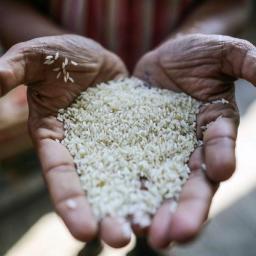
After three years of field trials in China, a group of international scientists led by Chuanxin Sun at Swedish University of Agricultural Sciences, in collaboration with Chinese and American scientists, have developed a new type of genetically modified rice that could boost food sustainability while fighting climate change..
Rice paddies are one of
the largest sources of atmospheric methane, which is thought to be responsible for one-fifth of the global warming effect. The new genetically-modified strain of Nipponbare rice - equipped with a gene taken from barley - emits as little as 1% of the methane. What's more, the new rice produces significantly higher yield per plant. The reason: More carbon going into rice grains left
less carbon to go elsewhere - which ultimately feed microbes that produce methane. Scientists have been working to develop rice with higher-nutrition, low-emissions traits for years, given that the crop that plays such a significant role in the diets of some 3 billion people.
While some experts hail the findings as an important breakthrough, it seems likely to add new fuel to the heated debate over genetically modified (GM) foods. "Right now, Chinese society is very sensitive" to concerns about GM food, Sun said. China, the world's largest producer of rice, hasn't allowed a single genetically modified rice variety into its fields. Assuming all further research goes well, the rice still might not be available for quite a while, given the regulatory processes involved.
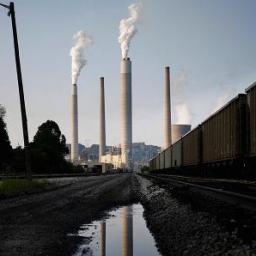
For the first time ever,
natural gas trumped coal as the top source of electric power generation in the U.S. In April, roughly 31 percent of electric power generation came from natural gas, whereas coal accounted for 30 percent. It's a dramatic difference from April 2010, when coal accounted for 44 percent of the mix and natural gas just 22 percent. In last 18 months, 17 gigawatt hours of coal-fired capacity has been retired completely, much of it already replaced by gas generation. "It could be the beginning of the end for the current fleet of coal plants."
As domestic demand at power plants has been falling, global demand for U.S. coal exports also continues to sag. On Monday Chinese customs data showed coal imports in China plunged 33.7 percent in June versus a year earlier. China is the largest consumer of the commodity in the world. U.S. coal exports have been in free fall for years as countries like Australia and Indonesia have provided supply to China more inexpensively. The stronger dollar is also making American supply pricier abroad.
Coal prices have continued to crater. This is particularly true of coal mined in the eastern U.S. Since their 2011 peak, prices have nearly halved. But the ripple effects extend beyond coal stocks. Coal, a historically high-margin business for railroads, accounted for nearly 19 percent of revenue for the Class I railroads in the U.S. in 2014. Of the 1.8 billion tons of freight transported via rail in 2014, 39 percent was coal.
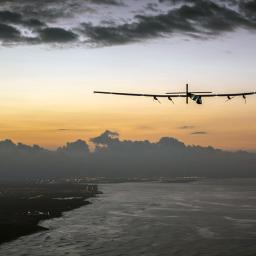
Solar Impulse 2 has successfully landed in Hawaii after completing its audacious five-day
journey across the Pacific Ocean. The mission, which has been dogged by recent delays, touched down safely at Kalaeloa Airport with Swiss pilot Andri(C) Borschberg in the cockpit. He had endured more than 100 hours alone in the plane with minimal sleep during the flight - smashing the record for the longest solo flight in aviation history by two days. The plane had originally been intended to fly straight from China to Hawaii, but worsening weather on the way meant Borschberg had to abort and land in Japan. Bad weather had also kept the plane grounded in China for several weeks longer than intended.
The next leg of the global circumnavigation flight was to be a four-day crossing to Phoenix, Arizona, but that has been postponed at least until 2016. The plane's batteries overheated and were
damaged beyond repair during the latest leg of the trip. It's not the technology itself that was the problem, the pilots say, but how the batteries were insulated. Replacing and testing the batteries will take at least a few months, and because the days in the Northern Hemisphere are already getting shorter, completing the rest of the journey in 2015 isn't an option.
The flight began in March over the desert sands of Abu Dhabi, and flown across Oman, India, Myanmar, China, Japan, and the Pacific Ocean. If all goes to plan, Bertrand Piccard will fly the next leg to Phoenix, Arizona, sometime in April. Piccard and Borschberg will alternate flying across the U.S., the Atlantic, and eventually all the way back to Abu Dhabi, completing the 35,000 kilometer (22,000 mile) journey.
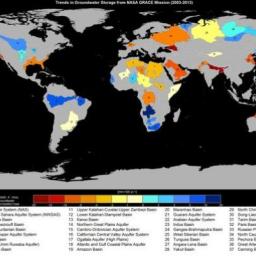
In two new studies, a team of researchers led by hydrologists from the University of California, Irvine assessed the depletion of groundwater on a global scale using readings from NASA's GRACE satellites. The satellites monitor changes in Earth's gravity and act as a "scale in the sky," measuring shifts in the total amounts of water, both above and below ground. They concluded that
likely much less water remains in aquifers than previously estimated. Groundwater is the primary source of water for about 2 billion people.
Over half of the world's biggest aquifers are being depleted. They are past sustainability tipping points, and a third of those big aquifers - 13 of those - are seriously distressed. The most severe situations seen in dry areas where little or no water is seeping into the ground to offset the amounts pumped out. The researchers found the Arabian Aquifer System, which supplies water to more than 60 million people, to be the most overstressed in the world, followed by the Indus Basin aquifer of northwestern India and Pakistan, and the Murzuk-Djado Basin in northern Africa, the Canning Basin in Australia and the aquifer system of the North China Plain. The aquifer beneath California's Central Valley was labeled as highly stressed. The Ogallala Aquifer didn't show up as being in decline, overall, even though portions of it likely have only a few decades of water left.
These problems can be addressed with proper management strategies, including replenishing aquifers when possible, recycling wastewater and adopting water-saving irrigation techniques.
The past three years have been the driest in California history dating to the 1849 Gold Rush. Low snow-pack, combined with 2014 being the hottest year in history in the state, exacerbated the situation. With all the attention focused on California's water woes, an observer might conclude that the Golden State's drought is the exception. It isn't.
Forty states expect to see water shortages in at least some areas in the next decade. In a 2013 survey by the Government Accountability Office (GAO), state water managers from around the country said they expect freshwater shortages to continue into the next decade, even under "average" conditions.
Montana was listed in the GAO report as the state most likely to have a statewide water shortage in the next decade. Many other western states are in a similar predicament. About 36 percent of Texas is experiencing moderate or exceptional drought, but that actually represents an improvement. In 2011, 100 percent of the state was experiencing drought. Texas lawmakers passed a referendum for $2 billion of the state's rainy day fund to be used to leverage $27 billion in bonds to implement a state water conservation plan. In Kansas, drought conditions also are a little better this year. Last year, 93 percent of Kansas was facing severe drought. The East is not immune. Delaware and North Carolina are likely to experience regional water shortages in the next decade. According to the U.S. Drought Monitor, the western part of North Carolina is already "abnormally dry."
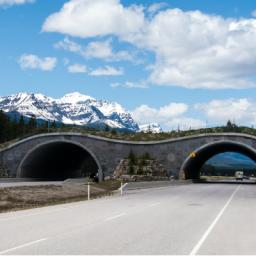
This week will mark a first for Washington, as the state breaks ground in construction for
their inaugural animal overpass. Interstate 90 in the Northwest cuts through the forests and mountains of the region, having long proved dangerous and fatal for wildlife. Now, the Department of Transportation will begin building a 150 foot-long structure freeway overpass designed specifically for all animals to endure safe passage, set to open in 2019.
While this is the first overpass, four underpasses are already open, and cameras have documented the transit of deer, coyotes, and otters, among others. It is presumed that all animals will look to the overpass, including black bears, cougars, and elk - though perhaps not at the same time. Two more overpasses are in the plans and perhaps more if there is enough money. Such structures have proven successful elsewhere, as more than 20,000 crossings a year from 30 species has been documented in Montana. Banff National Park in Canada has an extensive working of animal crossings, as seen above.






